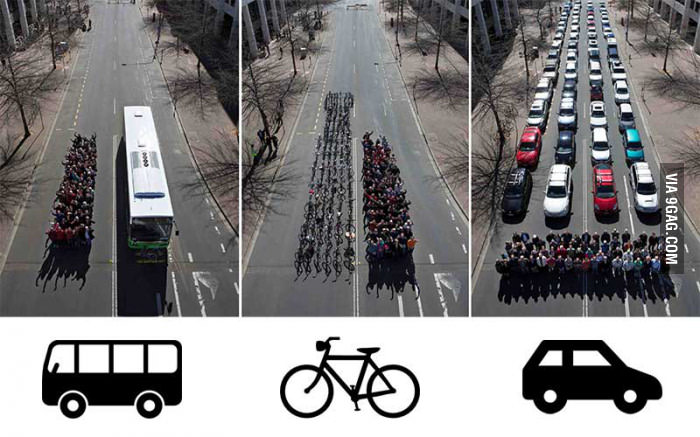Denver Post: Prioritizing People Instead of Cars Is “Extreme”

The Denver Post wants the city to slow down on this whole 21st Century transportation thing. In its latest editorial (“No, Denver Shouldn’t Make Driving More Difficult”), the paper warns against setting aside street space so people can get around quickly and safely on the bus or a bike.
The piece sprang from a comment I made in a forum held by the Downtown Denver Partnership. We were in the midst of a conversation about how policies like cheap on-street parking and employer subsidies for parking induce people to drive instead of taking transit or riding a bike. As a city, I said, “we have to make driving harder” if we’re going to deal with our growth without getting overwhelmed by traffic.
However you want to frame it, the bottom line is that all Denver has done for the last 70 years is make driving as easy as possible, and look where it’s gotten us — this approach hinders economic development and literally kills people with dangerous street design. The status quo of subsidized parking and car-first streets isn’t working for anyone — least of all the drivers who deal with mounting congestion thanks to policies that generate more traffic.
The Post opines that prioritizing people walking, biking, and using transit before cars is “extreme.” Points for sensationalism for conjuring up an “anti-car movement” that will yank the paper’s subscribers from their cars against their will. But in real life, cities like Seattle and San Francisco use another term for a street hierarchy that prizes efficiency, safety, and sustainability: “transportation planning.”
This is a paper that failed to grasp the concept of induced demand and bungled the economics of parking. So it’s not surprising that the Post doesn’t understand the basic geometric constraints of city streets:
Crissy Fanganello, director of transportation for Denver, said that the city is largely out of the business of building wider or more roads, because the grid has been set and built to capacity. Now, she said, the question becomes how the city makes the best use of the right-of-way it already owns.
We hope that best use accommodates those who cannot or will not use alternatives to their cars regardless of how fast and efficient the other options are.
There you have it. It’s 2017 and the Post still can’t be bothered to care about bus riders, or people on bikes, or kids and seniors who can’t safely cross the city’s high-speed streets on foot. To the Post, the city revolves around driving. Most people already commute by car, they say, therefore policy must cater first and foremost to car commuting. It’s an argument against progress and innovation.
The writers claim that they are behind Mayor Hancock’s Denveright initiative, which is essentially an intervention to break Denver’s car addiction. Yet the Post also wags its finger at the mayor: “We might learn to rue the day, however, if Hancock jumps on this little red wagon — excuse us — bandwagon being driven by the anti-car movement.”
To be clear: If the city doesn’t change course, driving cars is still going to get more difficult. That’s what happens when you try to fit more things in a finite amount of space. The question is, will Denver create a transportation system that gives people good options besides driving? That’s the only way forward if we want a future that’s not choked by traffic.


